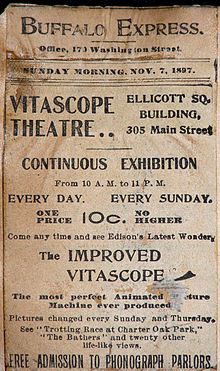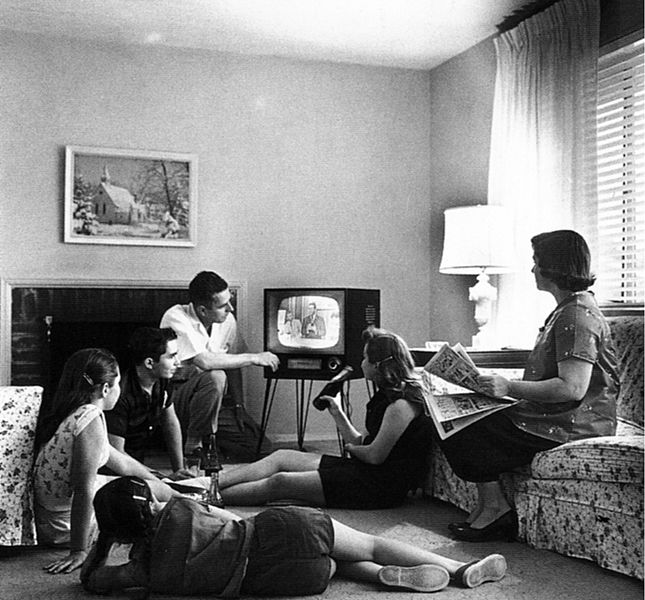A little more than a year ago, J.C. Penney's new management announced a change to its pricing strategy, in an effort to turnaround the troubled store - get rid of "nonstop promotions" and move to a simpler pricing structure. In the current issue of the New Yorker, James Surowiecki tells of the resulting fail: The biggest problem with [J.C. Penney CEO Ron] Johnson’s strategy is simple: he misread what Penney’s customers wanted. Doing away with constant markdowns was, on the face of it, sensible: instead of starting with a high price and quickly … [Read more...]
Archives for 2013
Self-publishing and the theology of free
Artsjournal.com links today to a story from Publishers Weekly at SXSW on self-publishing and the "theology of free." But what exactly is this theology? Called Self-Publishing in the Age of E, Deahl’s panel featured bestselling self (and now conventionally) published novelist Hugh Howey, author of the bestselling sci-fi series Wool, Erin Brown, a former St. Martin’s and HarperCollins editor and now an Austin based freelance editor, and literary agent Kirby Kim of William Morris Endeavor. It didn’t take long to get to core issues around … [Read more...]
Will the ACA cause prices to rise?
At Slate, Matthew Yglesias takes apart the argument by a Five Guys hamburger franchise owner that the Affordable Care Act (ACA, or "Obamacare"), with its requirements on employee health insurance, will drive up his prices. Yglesias says: no, if it makes sense to increase prices in light of potential increased profits, then that is so whether or not there are increased health insurance costs on the employer. Instead, he argues, the increased costs will simply cut into firm profits. Is that correct? Not quite. It is worth considering in a bit … [Read more...]
Tips, Charities and Businesses
This blog holds that arts managers can learn interesting things about pricing from non-arts businesses, and today I want to look at pricing of internet content. Preparation and presentation of content is not costless, and has to be financed somehow. It might be financed by the content provider herself, happy to do the work of writing a blog with no expectation of financial reward for the activity. Or it might be financed through bringing viewers to advertisers, or through a "tip jar", or through charging for full access to content, with only … [Read more...]
Why does the Indianapolis Museum of Art have Free Admission?
Preamble: I know what I don't know. Specifically, when looking at any arts organization and its menu of prices, I do not have insider knowledge of its current or potential audience, its donors, or its costs. So when I comment on the price structure of any specific museum or other arts firm, I do so only by asking questions, not by advising what it should or should not change. And with that cleared up ... Why does the Indianapolis Museum of Art have free admission? In her neighboring blog, Judith Dobrzynski describes the fiscal troubles at … [Read more...]
Consumer optimism at the gym and the museum
While at the gym this morning I got to thinking about ... what I pay to go to the gym. I have a membership, although the option of day passes is available to me. The rational thing for me to do at the start is to figure out how often I intend to go, and calculate which is the better deal, membership or day passes. I know that I am more likely to go more often with a membership because the monetary marginal cost to me (although not the cost in time) will be zero dollars per visit, and I should take that into account. But are people rational … [Read more...]
Why Is Dynamic Pricing So Rarely Used?
As technology has come available that allows performing arts organizations to adjust prices in light of demand, the question has arisen: is it appropriate for nonprofit theaters to employ dynamic pricing? See here and here for example. Let's consider the issue from a different angle: why is dynamic pricing so rarely used in the for-profit sector? For example, at my local multiplex cinema, I will pay $5 for a weekday matinee, $7.50 for weekday evening or weekend matinee, and $10 for a weekend evening. It doesn't matter whether the film I … [Read more...]
Targets, The Cost of Bread, and Nonprofit Arts Pricing
My previous post drew lessons for museum pricing from what we observe in the prices set by cable television providers. But how can for-profit pricing be relevant to nonprofit museums, to orchestras and opera? Don’t the nonprofit arts, unlike cable companies, have a mission to be accessible to all patrons, regardless of income? Let me draw from what might seem at first a very unrelated policy issue. All rich countries except the US raise government revenue through value-added taxes (VAT). These are sales taxes applied to all goods and … [Read more...]
Museums, Amusement Parks and Cable TV
Should museums charge visitors according to the length of their visit? In a recent paper Bruno Frey and Lasse Steiner argue they should. We pay per hour when we park our cars, so why not when we go to view art? This question came to mind during the recent flare up over the pricing of cable television. Yes, cable television and art museums (and amusement parks!) have something in common. Those of you who subscribe to cable television know that even the most basic package contains a lot of channels, many of which you never intend to watch. … [Read more...]









